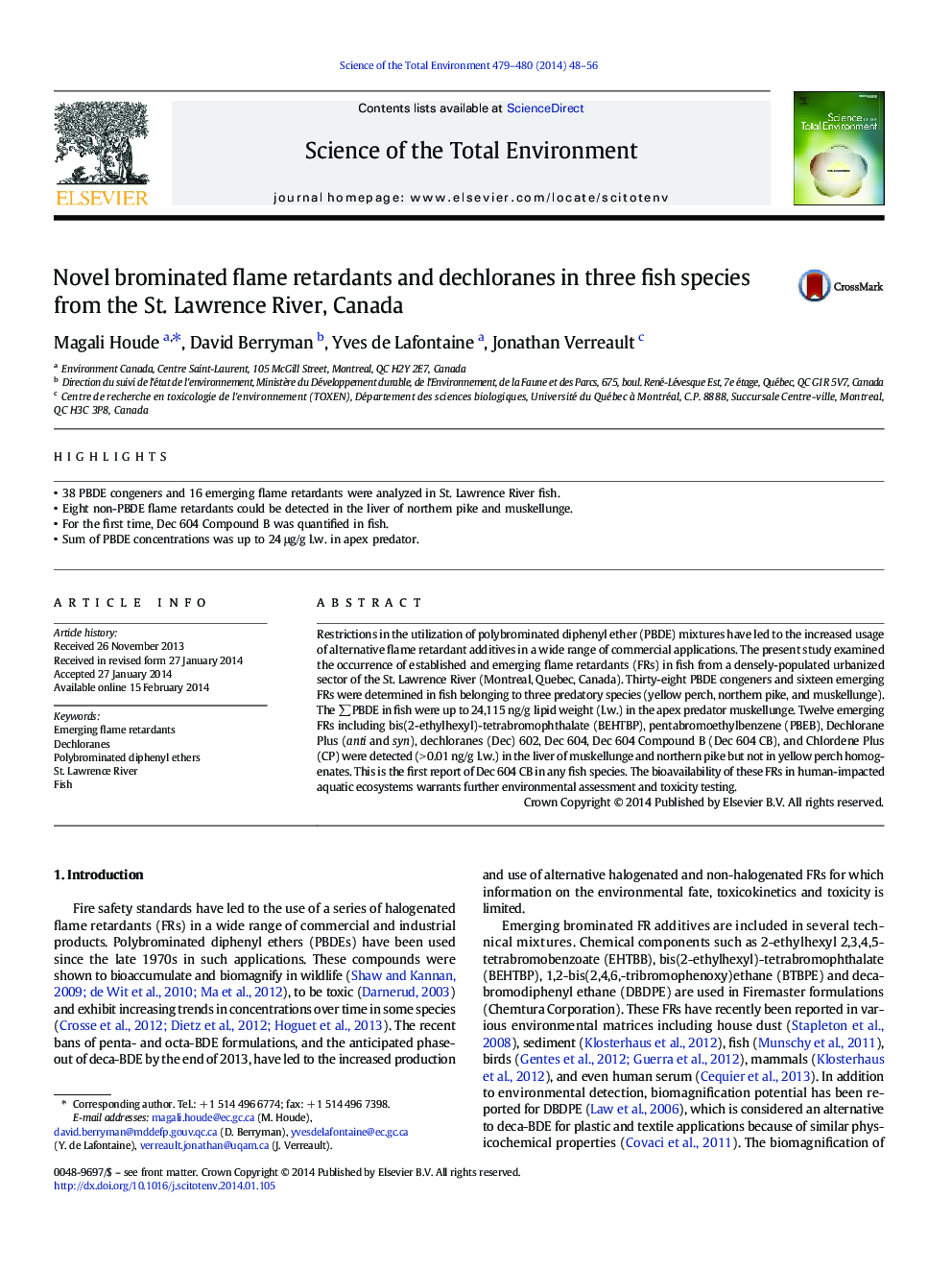| Article ID | Journal | Published Year | Pages | File Type |
|---|---|---|---|---|
| 6330966 | Science of The Total Environment | 2014 | 9 Pages |
Abstract
Restrictions in the utilization of polybrominated diphenyl ether (PBDE) mixtures have led to the increased usage of alternative flame retardant additives in a wide range of commercial applications. The present study examined the occurrence of established and emerging flame retardants (FRs) in fish from a densely-populated urbanized sector of the St. Lawrence River (Montreal, Quebec, Canada). Thirty-eight PBDE congeners and sixteen emerging FRs were determined in fish belonging to three predatory species (yellow perch, northern pike, and muskellunge). The âPBDE in fish were up to 24,115 ng/g lipid weight (l.w.) in the apex predator muskellunge. Twelve emerging FRs including bis(2-ethylhexyl)-tetrabromophthalate (BEHTBP), pentabromoethylbenzene (PBEB), Dechlorane Plus (anti and syn), dechloranes (Dec) 602, Dec 604, Dec 604 Compound B (Dec 604 CB), and Chlordene Plus (CP) were detected (> 0.01 ng/g l.w.) in the liver of muskellunge and northern pike but not in yellow perch homogenates. This is the first report of Dec 604 CB in any fish species. The bioavailability of these FRs in human-impacted aquatic ecosystems warrants further environmental assessment and toxicity testing.
Related Topics
Life Sciences
Environmental Science
Environmental Chemistry
Authors
Magali Houde, David Berryman, Yves de Lafontaine, Jonathan Verreault,
